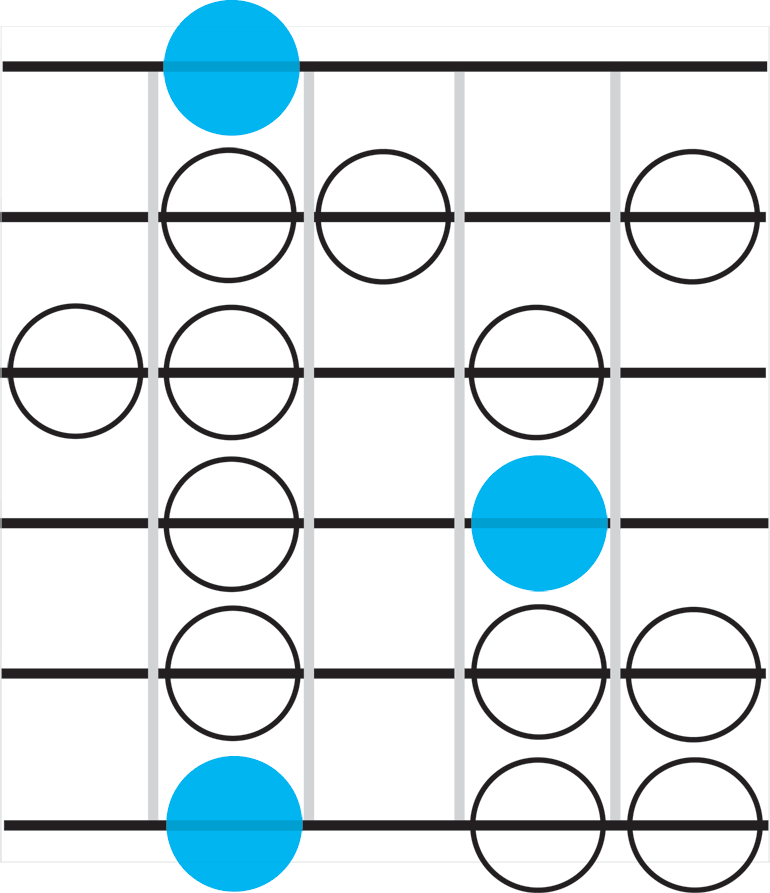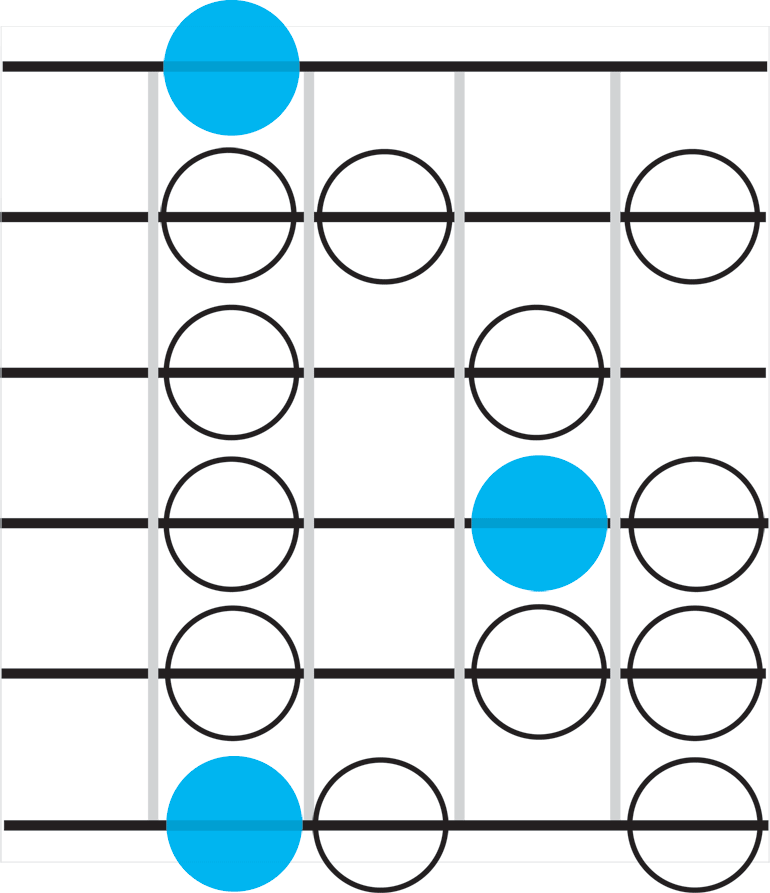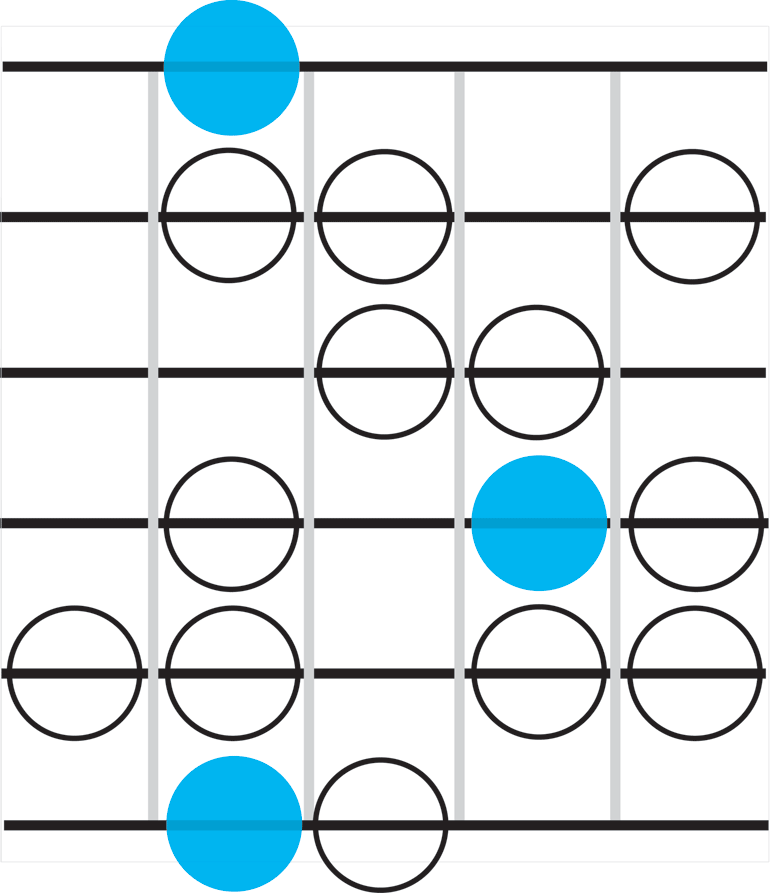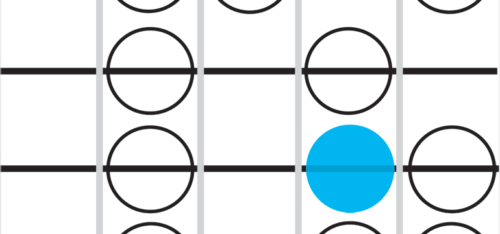You may have heard of modes, specifically the Phrygian mode. A mode is basically a guitar scale, and the theory behind modes can be useful, as it shows how different scales relate to each other. But if you find guitar theory a bit much you can skip all that. (If you are interested, check out a full explanation of modes here). If you find learning guitar scales hard, do not worry, this one is really easy! Also known as the Phrygian minor scale, it sounds super evil – great for metal – and will give a whole new twist to your riffs! Get Phrygian!
Guitar lesson contents:
- Recap: natural minor scale
- Phrygian scale
- When to use the Phrygian guitar scale
- Rock and metal tracks in the Phyrgian mode
- Phrygian mode vs. Phrygian dominant mode
- How to practise Phrygian mode
So, we are starting from an assumption you know a minor scale (also known as the natural minor or Aeolian mode). If you do, it’s as easy as changing one note in the scale. So let’s remind ourselves of the minor scale. If you are already familiar with this scale, jump forward to the Phrygian fingering diagram.
Recap: natural minor scale

Natural minor scale (Aeolian mode) Pretty straight forward so far. If this is new to you, probably best you spend a little time familiarizing yourself with this. Notice that this is the pentatonic blues scale with a couple extra notes added in. The root is the blue note – and naturally you can move this pattern up and down the neck to play it in any position/any key.
Phrygian scale
So, assuming you are happy with the natural minor scale, let’s move on to the Phrygian scale.

So you’ll probably notice it is pretty similar – just one note different. The second note of the scale is moved down just one step. All other notes remain the same. This keeps the darkness of the minor scale, but adds a slightly Spanish feel. The E and F together make for total heaviness and pure metal! How many tracks use these? Again this pattern can be used up and down the neck – at the 0 or 12th fret for the E Phrygian scale, at the 10th for the D Phrygian scale, at the 5th fret for the A Phrygian scale, etc.
When to use the Phrygian guitar scale
In metal music, particularly thrash metal, black metal etc. Phrygian scales are everywhere. You can write some killer metal riffs using the Phrygian mode, but you can also use it to solo over any pentatonic backing track. Look at the notes of the E Phrygian scale: E F G A B C D – and compare that with the E pentatonic: E G A B D. Take any E pentatonic riff and add a killer F. Try it!
Now, we have agreed not to go into the whys and wherefores of modes… but there is one think that is worth realizing… E Phrygian uses exactly the same notes as A Aeolian (natural minor). Need to know why – again refer to this. So if you’ve got a great Aeolian riff, play it in A over an E Phrygian! Cool eh?
Rock and metal tracks in the Phyrgian mode
There are hundreds of songs using the Phrygian scale, here are some of our favourites – add your favourite in the comments
Metallica – Wherever I may Roam
Iron Maiden – Powerslave
Megadeth – Symphony of Destruction
Death – Lack of Comprehension
Avenged Sevenfold – Unholy Confessions
Rainbow – Stargazer, Gates of Babylon
Scorpions – Sails of Charon
Marilyn Manson – Sweet Dreams
Joe Satriani – War
Steve Vai – Bangkok
Phrygian mode vs. Phrygian dominant mode
You may have also heard of the Phrygian dominant scale. This is very similar to the Phrygian minor scale, but the minor 3rd (G when talking about E Phrygian) is raised to a major 3rd (G#). This takes it away (slightly)from the doom-laddened Phrygian scale, but it’s still totally heavy, and a great scale for metal. Check the fingering chart below.

How to practise the Phrygian mode
So that’s it! Nowhere near as complicated as the name suggests. You are now ready to lay down some Phrygian riffs. Like all things guitar, practise is essential. I really recommend playing along to some Phrygian backing tracks, for example: Thrash Metal, Nu Metal Music, Metalcore Backing Tracks, Metal Backing Track E Phrygian. The more you practise the more familiar this scale will sound.
